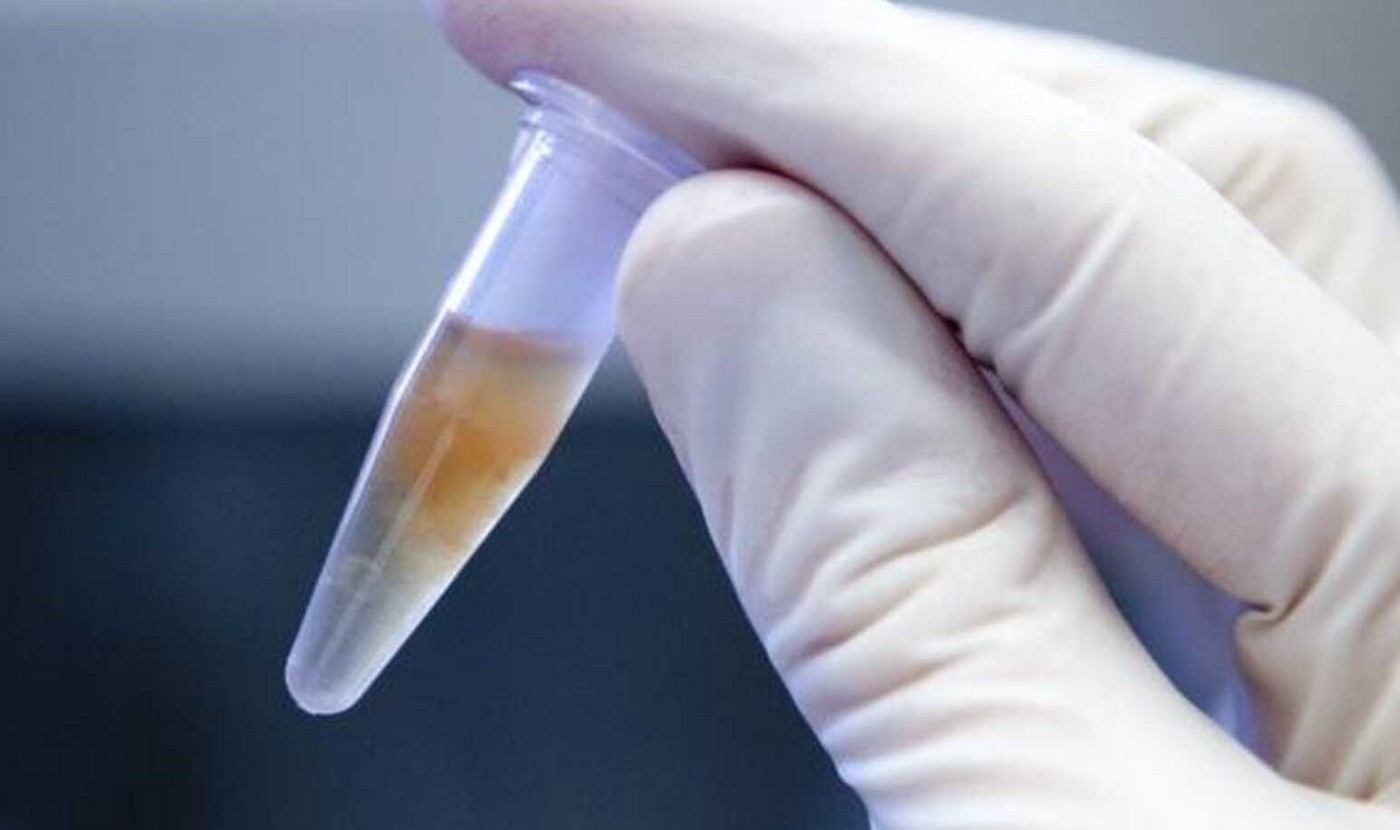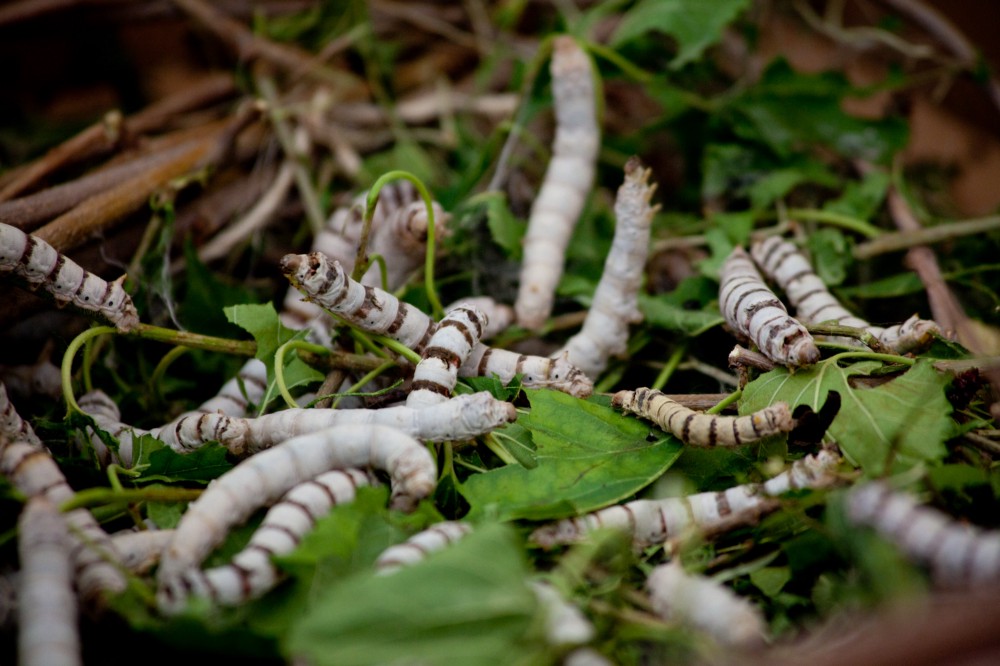Medicine is once again amazing to us: when silk, an ancient fiber, is used in conjunction with nano-diamonds, there will be such a breakthrough in the scientific community.
Shenzhen Translation Bureau is its compilation team, focusing on the fields of technology, business, workplace, life, etc., focusing on introducing new technologies, new ideas, and new trends abroad.
Editor’s note: This article introduces the medical experiments conducted by Australian scientist Khalid and related researchers on silk and nanodiamonds. For a long time, silk has been regarded as a raw material for fabrics, and diamonds have been regarded as an ornament. But in the eyes of scientists, the combination of these two materials can make powerful sensors to detect various diseases in humans. This article is from Medium, author Wilson da Silva, the original title is “Silk & Diamonds: The Fancy End of High-Tech Medicine”.
Silk fiber | Picture from Tufts University
Key points:
-
Nano-diamond is an ideal biosensor carrier because of its small crystal structure; silk is a pure natural biological material that is easily absorbed by living bodies and is an ideal outer layer to wrap the sensor.
-
At present, researchers have successfully tested various sensors wrapped in silk, such as PH sensors, hydrogen peroxide sensors, calcium and zinc and other metal ion sensors.
-
It is estimated that in the future, such silk-encased sensors will be used in a wider range of medical applications, including cancer treatment, sperm cell detection, cell imaging for the brain, and even burn treatment.
Shining nano diamonds
Asma Khalid likes to wear silk skirts and diamonds. But she did not expect that these two things would become the two most important elements in her career. Simply put, the medical community has now discovered thatStones and silk transport drugs in the body.
Asma Khalid has been studying nanodiamonds while studying for a doctorate at the University of Melbourne, Australia. The crystal structure of this diamond is less than one thousandth of a millimeter, plus it is chemically inert and shiny as a diamond, so it has been widely used in biology and has become a biological sensing tool.
Now, Khalid, a postdoctoral fellow and researcher at Melbourne Polytechnic University, said: “Nanodiamond is a fluorescent material. When we irradiate it with a laser, it will continue to emit light. But the surface of this material is relatively rough. I like to condense, and sometimes we want it to continue to glow, but it always blinks.” Khalid is now also an associate researcher at the Australian Nanoscale Photonics Centre (CNBP). “Therefore, we hope to find a material that wraps these nano-diamonds so that its surface becomes smooth and at the same time it is irrelevant to the biological properties of living bodies. Then we thought of silk.”
Why choose silk?
The history of silk is to be traced back to the Neolithic period before 12000. It was first discovered in the Yangshao site around the Yellow River in China. In order to obtain high-quality silk, young silkworms must be raised artificially, and then the silk can be drawn out after the silkworms spit them out to make cocoons. The reason why the surface of the silk is reflective is because its fibers are rhombohedral structures, and different colors appear from different angles.
Silk is a pure natural biological fiber, which can be absorbed by the living body | Picture from Ed Schipul/Flickr
Khalid said that as a natural fiber, silk is non-toxic and harmless to the human body, because it is completely composed of protein and amino acids, and is different from other fibers in optical properties. Silk can increase the brightness of nano-diamonds. The scientists first implanted the silk in the mouse and found that the silk dissolved in the mouse and the mouse did not show any adverse reactions.
She wrote the research results and published them in the “Biomedical Optics Letters”. With this research, she won a scholarship to Tufts University in Boston. The school led by Professor Fiorenzo Omenetto happened to be a pioneer in applying silk to biomedical optics. After joining Professor Omenetto’s laboratory, Khalid is working on producing colorless silk, so that he does not need to worry about hiding its luster when wrapping nano diamonds.
She said: “I learned how to extract the silk from the cocoon, liquefy it and convert it into a thin film structure, which can be injected into a 3D printer and other biomedical devices.”
She also added: “I also successfully wrapped the nano-diamonds with silk. The wrapped diamonds are particularly bright and suitable for cell imaging tools. In addition, it is also suitable for being delivered to human bodies as a drug carrier. Used to track and treat cancer.”
“After being sent into the human body, the silk will gradually dissolve, and the drug wrapped by the nano-diamond will be released. We can use the light emitted by the nano-diamond to finally diffuse the drug.”
When silk wraps the nanosensor
An important study at Tufts University is the application of nanodiamonds in biosensing. When Khalid returned to Australia and joined Melbourne Polytechnic University, she also began to cooperate with Tufts University: “We combined the results of the research and found that this silk-coated nanodiamond is imaging, sensing, releasing drugs and tissues. Regeneration can have a very wide range of applications.”
Khalid built his own laboratory at Melbourne Polytechnic University. The main task of the laboratory is to extract transparent silk and liquefy and nanometerize it to form a layer of fiber coating-under a microscope, this coating It is composed of pieces of similar size connected to each other, which can be used to wrap the surface of the object for health monitoring.
Dr. Asma Khalid in her studio | Picture from CNBP
During this period, Li Wenjia, a biomedical expert at the Nanoscale Biophotonics Center at the University of Adelaide, Australia, is testing the response of ultrafine fibers in the human body. In vivo reactionIn order to carry out medical monitoring of the human body without cutting a sample from the human body as before.
“For example, we want to detect whether the tumor deep in the patient’s lungs is malignant or benign. We can now judge by testing PH, carbon dioxide, or other molecules instead of removing a sample from the tissue as before. Do another biopsy.”
“Alternatively, we don’t need to draw blood to get the patient’s glucose and other components. Instead, we can implant optical fibers that are smaller than the hair in the human body. Once they enter the human body, they can start monitoring without waiting for the results and reactions. “But Li Wenjia needs to find an outer layer that can wrap the ultra-fine fibers so that it will not undergo chemical reactions in the human body. So for quite a long time, Li Wenjia has been looking for raw materials that can be used as protective coatings.
Li Wenjia said that it is difficult to find suitable raw materials, which will neither cause harm to the human body nor produce chemical reactions that interfere with the test results.
At this time, Khalid suggested that she use liquid silk as the coating material. Two people wrapped the ultrafine fiber with silk, and then did a biosensing experiment on the mouse. Li Wenjia said: “I can’t believe it is so simple! Silk is a natural biological material, and the mouse does not have any rejection reaction to it. The entire detection process can be completed at normal temperature. All we do is put the ultrafine fiber in the liquid silk Soaked for 30 seconds!”
Change the structure of liquid silk
After determining that the living body is not repelling the silk, the next challenge is to ensure that the sensor in the silk can work properly. To achieve this goal, organic chemist Aimee Horsfall and Dr. Patrick Capon, who is responsible for sensor design at the Nanoscale Biophotonics Center at the University of Adelaide, have invested a lot of effort.
Horsfall said: “We need to test the stability of this system. If we insert the sensor into a certain organ or tumor, will it not work properly? What are the limitations of this biosensor? This is our urgent Need to figure out the problem.”
They start with the PH sensor first. This sensor can be used to test the pH value of aqueous solutions. Soon they encountered a problem: the silk and the sensor could not be tightly wrapped together. After several months of failed attempts, they finally found a synthetic peptide that can adjust the viscosity of the silk to make it tightly attached to the sensor.
In this schematic, the nanodiamond is attached to a string of proteins, and the protein is illuminated by its own light source | Picture from Carlo Bradac/CNBP
Later, they immersed the sensor in a mixture of synthetic peptide and liquid silk for 30 seconds, and then in methanol for 10 seconds. Capon said: “We changed the structure of the silk so that it became a crystal that can be firmly attached to the sensor. We implanted the wrapped sensor into the living body, then turned on the laser, and successfully obtained the fluorescent signal.”< br>
Now, researchers have successfully experimented with PH sensors, and now they are beginning to try various other sensors, such as hydrogen peroxide sensors (detecting sperm cells), metal ion sensors such as calcium and zinc (for fertility and in vitro Fertilization environment) etc. In fact, in the medical community, there are a wide range of specific sensors for certain diseases, and liquid silk will provide a layer of security for the sensors.
More applications
Horsfall and Capon said: “We still have a lot of work to do, and we are very excited about it. Every meeting we will come up with at least 3 new applications Many questions can be considered: how many fiber sensors can we wrap silk? How can other biologists or clinical medical staff apply these silks?”
At the same time, Khalid also cooperated with Macquarie University in Sydney to apply her research results to cancer treatment; in addition, she also worked with a team of Melbourne Polytechnic University to complete the imaging and painting of the brain. There are magnetic examples of liquid silk; in the end, she also worked with the University of Melbourne to create metal oxide nanoparticles wrapped in liquid silk that can image cells.
In addition, she has been studying how to mix silk with other materials to treat burns.
Khalid said: “I used to only use silk as fabric, but when I consulted the medical literature, I realized that people started to use it as a medical suture hundreds of years ago. Silk and diamonds may be the same Kinds of ornaments, but their optical properties are very good, and they will have broad applications in medical treatment.”
Translator: Michiko



